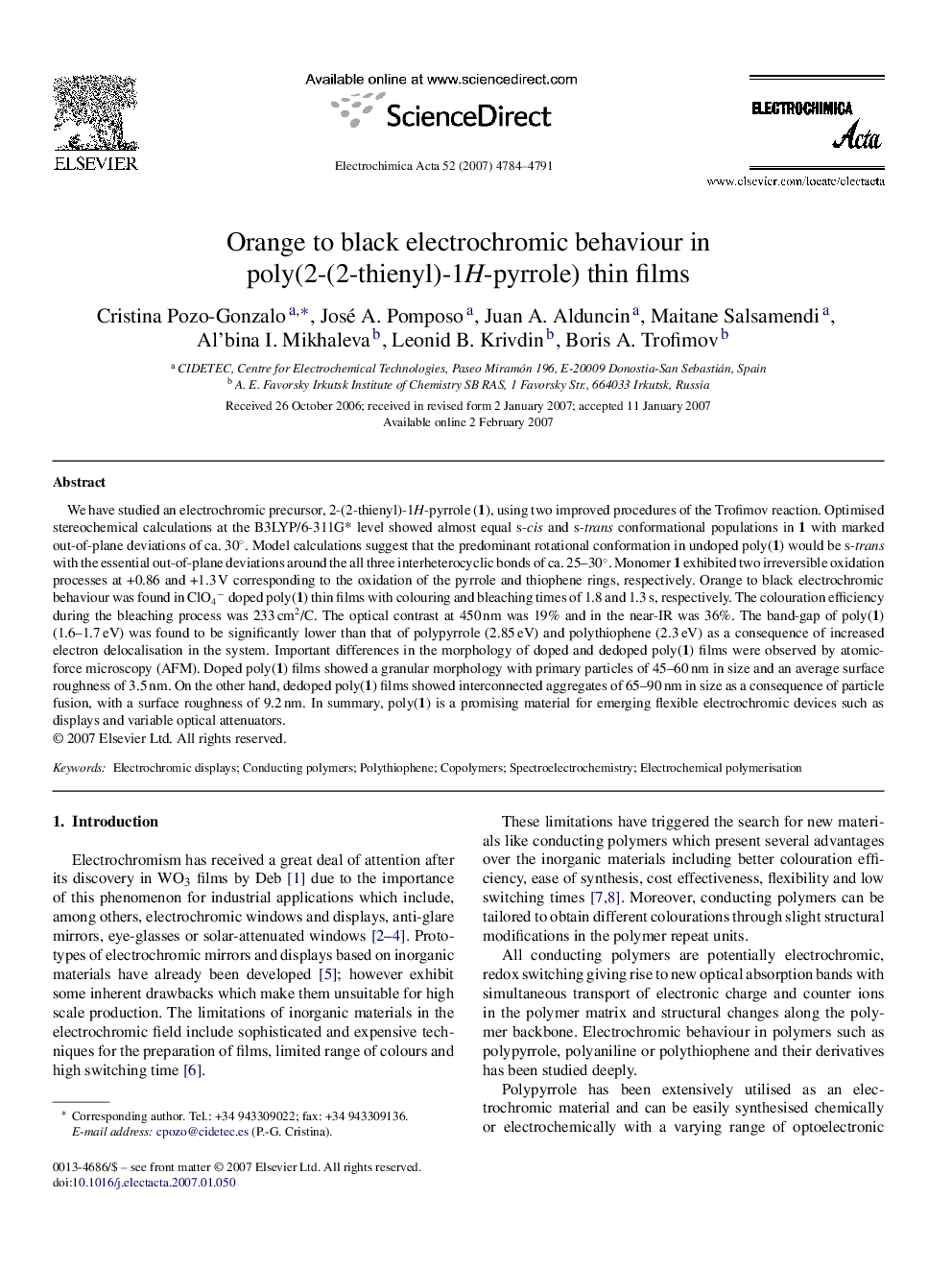| کد مقاله | کد نشریه | سال انتشار | مقاله انگلیسی | نسخه تمام متن |
|---|---|---|---|---|
| 194576 | 459795 | 2007 | 8 صفحه PDF | دانلود رایگان |

We have studied an electrochromic precursor, 2-(2-thienyl)-1H-pyrrole (1), using two improved procedures of the Trofimov reaction. Optimised stereochemical calculations at the B3LYP/6-311G* level showed almost equal s-cis and s-trans conformational populations in 1 with marked out-of-plane deviations of ca. 30°. Model calculations suggest that the predominant rotational conformation in undoped poly(1) would be s-trans with the essential out-of-plane deviations around the all three interheterocyclic bonds of ca. 25–30°. Monomer 1 exhibited two irreversible oxidation processes at +0.86 and +1.3 V corresponding to the oxidation of the pyrrole and thiophene rings, respectively. Orange to black electrochromic behaviour was found in ClO4− doped poly(1) thin films with colouring and bleaching times of 1.8 and 1.3 s, respectively. The colouration efficiency during the bleaching process was 233 cm2/C. The optical contrast at 450 nm was 19% and in the near-IR was 36%. The band-gap of poly(1) (1.6–1.7 eV) was found to be significantly lower than that of polypyrrole (2.85 eV) and polythiophene (2.3 eV) as a consequence of increased electron delocalisation in the system. Important differences in the morphology of doped and dedoped poly(1) films were observed by atomic-force microscopy (AFM). Doped poly(1) films showed a granular morphology with primary particles of 45–60 nm in size and an average surface roughness of 3.5 nm. On the other hand, dedoped poly(1) films showed interconnected aggregates of 65–90 nm in size as a consequence of particle fusion, with a surface roughness of 9.2 nm. In summary, poly(1) is a promising material for emerging flexible electrochromic devices such as displays and variable optical attenuators.
Journal: Electrochimica Acta - Volume 52, Issue 14, 1 April 2007, Pages 4784–4791